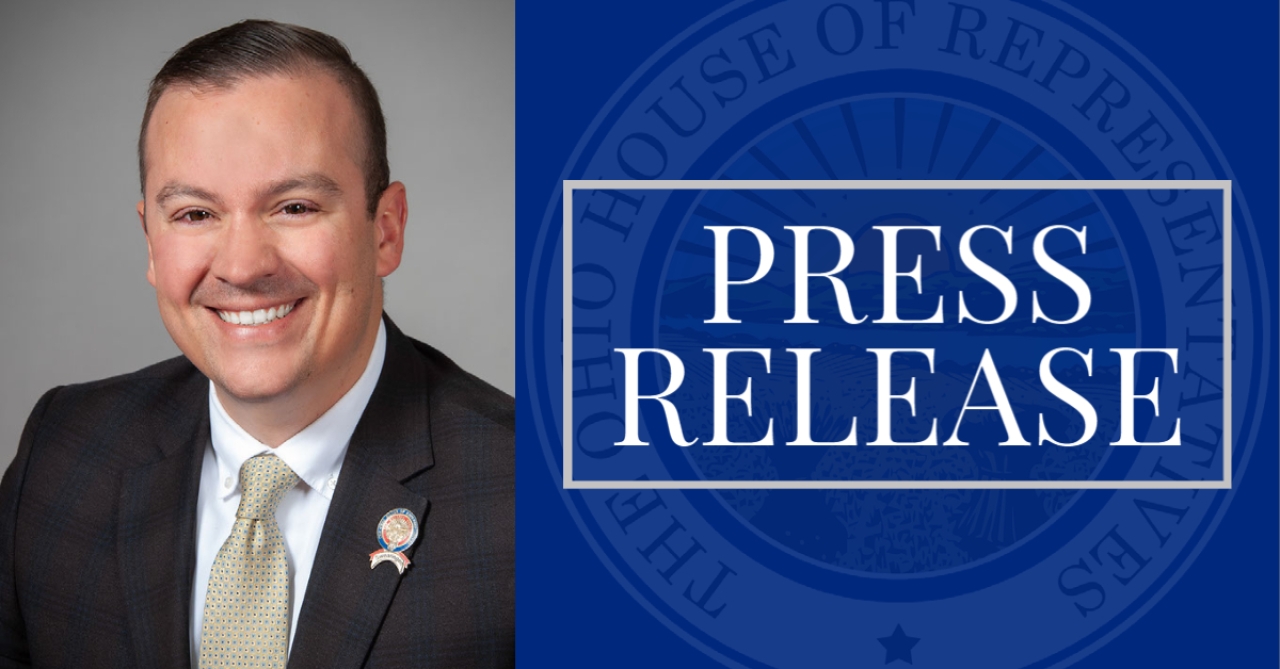Swearingen Supports Initiative to Connect Areas between Columbus and Sandusky in Historic Transportation Budget

State Rep D.J. Swearingen (R-Huron) supported House Bill 23 on Wednesday, which is the historic transportation budget legislation investing $12.6 billion into the state’s infrastructure. The bill also includes an initiative to look at efficient ways to connect Columbus and Sandusky.
The legislation was passed by the Ohio House during the vote.
“The bill is so significant on improving our infrastructure, but also for all the job opportunities that come along with it,” said Swearingen. “It’s also my hope that through finding ways to link routes from Columbus to Sandusky and beyond that we see significant strides in job growth and economic development across our region.”
Swearingen notes the initiative being funded is the Strategic Transportation and Development Analysis, which will study links and find faster ways to connect areas between Columbus and Sandusky and Columbus and Toledo.
"It's great to see transportation connectivity happening directly with our city, which will lead to more economic development and growth for our communities,” said John Orzech, Interim City Manager of Sandusky.
The legislation is the largest commitment of highway infrastructure spending in Ohio history with $12.6 billion in funding for Ohio’s transportation system over the next two years.
"We are excited to see this initiative move forward in the House,” said Joe Roman, CEO of the Greater Sandusky Partnership. “Looking at ways to further enhance transportation routes is going to improve ways we can create economic hubs and many jobs throughout the region."
Other key components of the bill include:
- Funding $2.2 billion for pavement, $717 million for bridges, $360 million for dedicated safety upgrades, and $1.5 billion for large, capacity adding projects such as reconfiguring urban interstates.
- ·Creating the Rural Highway Fund, $1 billion in new money focused solely on projects that add capacity or reduce commute times to employment centers in counties that do not have a municipality over 65,000 residents.
- Providing reliable transportation routes for workers in rural parts of the state who otherwise might be forced to relocate in order to gain employment.
- Investing $14 million to establish the Ohio Workforce Mobility Partnership Program, which allows one or more regional transit authorities (RTA) to work together to provide service for the workforce between the territories and supporting the employment needs of economically significant employment centers.
- Requiring the Public Utilities Commission (PUCO) and the Environmental Protection Agency to create and submit a report to the General Assembly within 90 days of the effective date on the transportation of hazardous materials and waste in the state.
- Mandating that an operator be notified of a wayside detector system defect. Requires DOT and PUCO to ensure the messages are sent.
- Requiring that a train must have a two-person crew related solely for safety.
- Allowing law enforcement to use tinted vehicle windows for "purposes within the scope of their duties" versus cases-by-case authorization.
- Preventing park districts being pulled into an improvement district without consent to standardize the practice used by other local government entities.
- Clarifying that the prohibition of counties and townships using traffic cameras applies only to enforcement of red light or speeding violations and not the detection and enforcement of criminal offenses.
- Allowing for the permanent registration of noncommercial trailers.
The legislation now moves to the Senate for further consideration and deliberations.







